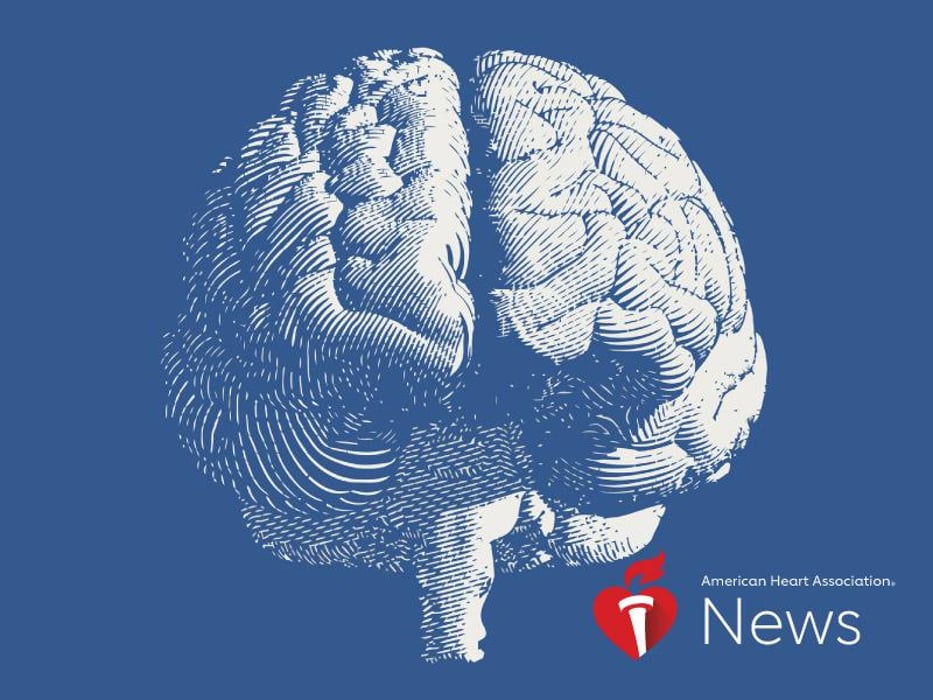AHA News: Indigenous Populations May Have Higher Stroke Risk

MONDAY, Feb. 6, 2023 (American Heart Association News) -- In highly developed countries, Indigenous populations may have a higher rate of stroke, according to new research that highlights a dire need for more data and well-designed studies.
Each year, nearly 12 million people worldwide have a stroke, which takes place when a vessel carrying blood to the brain is blocked by a clot or the vessel ruptures and bleeds into the brain, causing brain cells to die. But little is known about stroke's impact on the estimated 370 million Indigenous people worldwide.
Researchers reviewed data about the impact of stroke on Indigenous populations in countries ranking high on the Health Development Index, a guideline designed by the United Nations to measure economic wealth, education and life expectancy. By focusing on highly developed countries, researchers hoped to find the true burden of the disease without the bias of poor health care access, said the study's lead researcher, Dr. Anna Balabanski, a neurologist and stroke physician at Alfred Health in Melbourne, Australia.
They found 24 peer-reviewed studies and abstracts from seven countries from 1990 to 2022 that looked at stroke among Indigenous adults. Compared with respective non-Indigenous populations, the study found age-standardized stroke rates were about two to three times greater in Aboriginal and Torres Strait Islander Australians, almost twice as great in Singaporean Malay populations, and 8% to two times higher among Sámi populations in Sweden and Norway. American Indians had a 20% greater stroke rate than non-Hispanic white populations.
The research will be presented Feb. 10 at the American Stroke Association's International Stroke Conference in Dallas. The findings are considered preliminary until the full results are published in a peer-reviewed journal.
"These findings reflect the overall impact of colonization on health in these populations," Balabanski said. "If you don't have access to education, work or healthy food, or if you have to travel hundreds of kilometers to see a doctor, those factors may predispose you to poor health."
Balabanski said health care professionals need to be more proactive about stroke prevention and treatment for Indigenous patients. Better health care education in Indigenous communities is also essential, she said.
"While we can't change the historical intergenerational trauma, we can change things going forward to give Indigenous populations the best possible access to health care and the best opportunities for a healthy life."
The study was done in conjunction with a seven-person Indigenous Advisory Board, made up of Indigenous researchers from around the world. Balabanski said one limitation of how the original studies were conducted is that Indigenous people were not involved in overseeing the studies.
"It's critically important for Indigenous stakeholders to design, lead and review the research at every stage so it can have the greatest relevance and impact," she said.
Balabanski said the study was also limited by gaps in data availability and quality. Stroke rates might actually be higher than reported since Indigenous people in remote areas may not go to the hospital. Even if they do, they may not identify themselves as Indigenous out of fear of discrimination, she said.
Dr. Hugo J. Aparicio, who was not involved in the study, said researchers "did a great job of helping us understand how incomplete the data is as we try to understand the risks of stroke in Indigenous people."
"The most important part of their research is demonstrating the need for stakeholder involvement," said Aparicio, assistant professor of neurology at Boston University Chobanian & Avedisian School of Medicine. "You need participation from the community that is experiencing these stroke disparities to help guide the design of the research, provide and help gather the data, and help investigators to report the findings accurately and in a manner that will help the public understand the increased risk."
The next step, he said, "is to address public health interventions that narrow these disparities."
Aparicio called for future studies that focus on social determinants of stroke in Indigenous populations, including health care access, structural racism and modifiable lifestyle factors. He also called for more research in countries that score low on the Health Development Index, saying "these are countries where the disparities may be even more exacerbated."
American Heart Association News covers heart and brain health. Not all views expressed in this story reflect the official position of the American Heart Association. Copyright is owned or held by the American Heart Association, Inc., and all rights are reserved. If you have questions or comments about this story, please email editor@heart.org.
By Thor Christensen, American Heart Association News
Related Posts
Los hispanos esperan media hora más en emergencias cuando sufren dolor de pecho
LUNES, 16 de mayo de 2022 (HealthDay News) -- Cuando los estadounidenses de...
IDSA: Maternal RSVpreF Vaccine Would Cut Clinical, Economic Burden
MONDAY, Oct. 16, 2023 (HealthDay News) -- Maternal vaccination with a bivalent...
AAP Addresses Management of Pediatric Mental, Behavioral Health Emergencies
WEDNESDAY, Aug. 16, 2023 (HealthDay News) -- In a policy statement issued by the...
Axillary Lymphadenopathy Resolves at Mean 102 Days After COVID-19 Booster
WEDNESDAY, March 15, 2023 (HealthDay News) -- The time to resolution of axillary...
